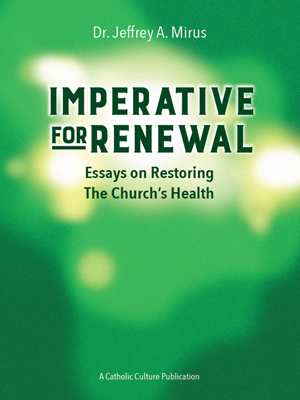Catechism of the Catholic Church
356 Of all visible creatures only man is "able to know and love his creator". 219 He is "the only creature on earth that God has willed for its own sake", 220 and he alone is called to share, by knowledge and love, in God's own life. It was for this end that he was created, and this is the fundamental reason for his dignity:
What made you establish man in so great a dignity? Certainly the incalculable love by which you have looked on your creature in yourself! You are taken with love for her; for by love indeed you created her, by love you have given her a being capable of tasting your eternal Good. 221
357 Being in the image of God the human individual possesses the dignity of a person, who is not just something, but someone. He is capable of self-knowledge, of self-possession and of freely giving himself and entering into communion with other persons. And he is called by grace to a covenant with his Creator, to offer him a response of faith and love that no other creature can give in his stead.
358 God created everything for man, 222 but man in turn was created to serve and love God and to offer all creation back to him:
What is it that is about to be created, that enjoys such honour? It is man that great and wonderful living creature, more precious in the eyes of God than all other creatures! For him the heavens and the earth, the sea and all the rest of creation exist. God attached so much importance to his salvation that he did not spare his own Son for the sake of man. Nor does he ever cease to work, trying every possible means, until he has raised man up to himself and made him sit at his right hand. 223
359 "In reality it is only in the mystery of the Word made flesh that the mystery of man truly becomes clear." 224
St. Paul tells us that the human race takes its origin from two men: Adam and Christ. . . The first man, Adam, he says, became a living soul, the last Adam a life-giving spirit. The first Adam was made by the last Adam, from whom he also received his soul, to give him life... The second Adam stamped his image on the first Adam when he created him. That is why he took on himself the role and the name of the first Adam, in order that he might not lose what he had made in his own image. The first Adam, the last Adam: the first had a beginning, the last knows no end. The last Adam is indeed the first; as he himself says: "I am the first and the last." 225
360 Because of its common origin the human race forms a unity, for "from one ancestor [God] made all nations to inhabit the whole earth": 226
O wondrous vision, which makes us contemplate the human race in the unity of its origin in God. . . in the unity of its nature, composed equally in all men of a material body and a spiritual soul; in the unity of its immediate end and its mission in the world; in the unity of its dwelling, the earth, whose benefits all men, by right of nature, may use to sustain and develop life; in the unity of its supernatural end: God himself, to whom all ought to tend; in the unity of the means for attaining this end;. . . in the unity of the redemption wrought by Christ for all. 227
361 "This law of human solidarity and charity", 228 without excluding the rich variety of persons, cultures and peoples, assures us that all men are truly brethren.
Notes:
English Translation of the Cathechism of the Catholic Church for the United States of America © 1997, United States Catholic Conference, Inc.






